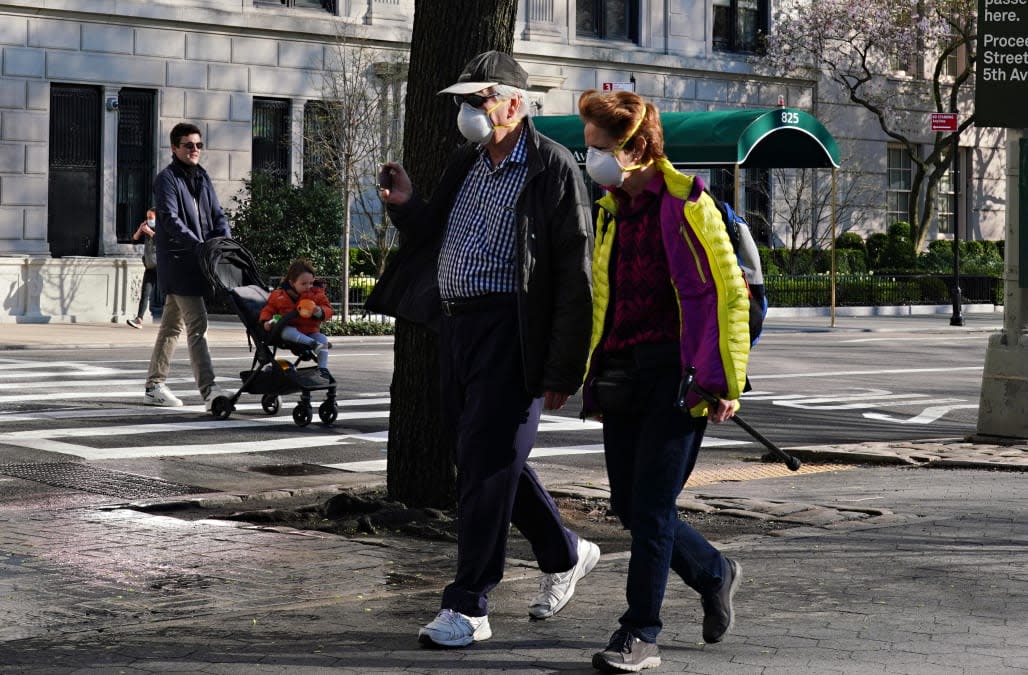Humans aren't wired to comprehend a pandemic. Here's why.

When people make decisions, psychologists have found, two main systems influence their thinking and decision-making: gut feelings and logical analysis.
One is more immediate and based on intuition. The other is slower, more thoughtful and based on evidence.
"The fast-thinking and gut feelings usually dominate," said Paul Slovic, a professor of psychology at the University of Oregon and author of several books on risk perception and behavioral sciences. "This is because it's natural and easy, and most of the time we trust our intuitions to give us good guidance in our daily lives."
Human intuition, however, is not particularly well geared to a pandemic.
Around the world, the coronavirus has forced schools to close, economies to stall and countries to lock down their borders. It has also solicited a wide range of reactions from people, many of which psychologists say show just how difficult it can be for the human mind to comprehend risk.
That mental disconnect can be explained by how humans react to fear and their perception of risk — and the biases that color both. The concept of risk is difficult for the human mind to grasp because it's typically based on perceived threats rather than any quantifiable measure of the threat itself, Slovic said.
"Danger is real, but risk is a construct that has many different meanings and definitions," Slovic said. "It's a word we attach to things that are dangerous to try to gauge how dangerous they are to us."
Slovic and his colleagues have conducted extensive research showing that from a psychological standpoint, risk is subjective.
"It's based on judgments and assumptions," he said. "And we basically base these judgments on our feelings."
Even before the coronavirus spread widely in the U.S., fear of the pathogen was high, which led people in some cities to hoard toilet paper and other supplies. And following reports that the virus emerged in Wuhan, China, cities such as Los Angeles, San Francisco and New York reported racist attacks against Asian Americans.
When there is a lack of information, emotions can fill in the gaps, and when those emotions are miscalibrated, they can lead to bad judgment — or dangerous behavior.
"When you don't have enough information or you don't have accurate information, the fear you're feeling makes every threat seem much more likely," said David DeSteno, a professor of psychology at Northeastern University in Boston.
On the other hand, there have been instances of people not taking the coronavirus threat seriously enough. In the U.S., the federal government has been criticized for its slow response. On Feb. 28, President Donald Trump downplayed the virus' threat at a rally, accusing Democrats of overhyping the outbreak.
And even after some states enacted strict, statewide stay-at-home orders to slow the spread of the coronavirus, some governors resisted issuing similar social distancing measures. As of Wednesday, five states had no official stay-at-home orders, even though Dr. Anthony Fauci, director of the National Institute of Allergy and Infectious Diseases and a member of the White House coronavirus task force, said last week that he doesn't understand why Americans in all states aren't operating under the same guidelines.
Part of the reason is that responses to the outbreak have become politically charged, according to Slovic.
"Even in this case, where we have a devastating reality that should be bringing us all together, we still see partisan divisions," he said.
That introduces biases into the mix, which can sway people's perceptions. With social media, for example, information can be passed around rapidly, but so can misinformation.
"We tend to tailor it so that we only watch the stuff that tells us what we want to believe or things along our own ideological biases," Slovic said. "This all leads to tremendous polarization."
Even without biases, pandemics can be particularly difficult to comprehend because they operate on the principle of exponential growth. In other words, outbreaks can escalate quickly. A location with one infection could see hundreds after a week, multiplying into the thousands not long after.
"The way the virus spreads, everything is under control until it isn't — that's the nature of exponential growth," Slovic said. "Our minds think linearly, at a constant rate of growth, but this is a nonlinear process. It's a natural tendency for most of us to underestimate the speed at which an exponential process will take off, and then suddenly it overwhelms us."
Slovic said he worries that the same false sense of comfort drives many people to downplay the dangers of climate change.
"We're reacting very strongly to this pandemic now because the crisis is very close to us," he said. "Fortunately, we don't have these pandemics very often, but we do have some very serious natural disasters, whether it's hurricanes, floods, earthquakes or massive forest fires. Yet we can be rather blasé about natural disasters, and even when they hit, people go back to the same places and rebuild and expose themselves to similar risks again."
Apossible explanation for this imbalance is that the coronavirus and COVID-19, the disease it causes, are new.
"The unknown factor definitely makes it worse," DeSteno said. "It's a new virus, so nobody has immunity to it. Anybody can succumb to it, so it's almost universal."
The virus is also an invisible threat, which can heighten its perceived risk, according to DeSteno.
"If there's a flood or a fire, you can see that," he said. "Here, you can't see germs, so we don't know where they are, and that means they could be anywhere."
